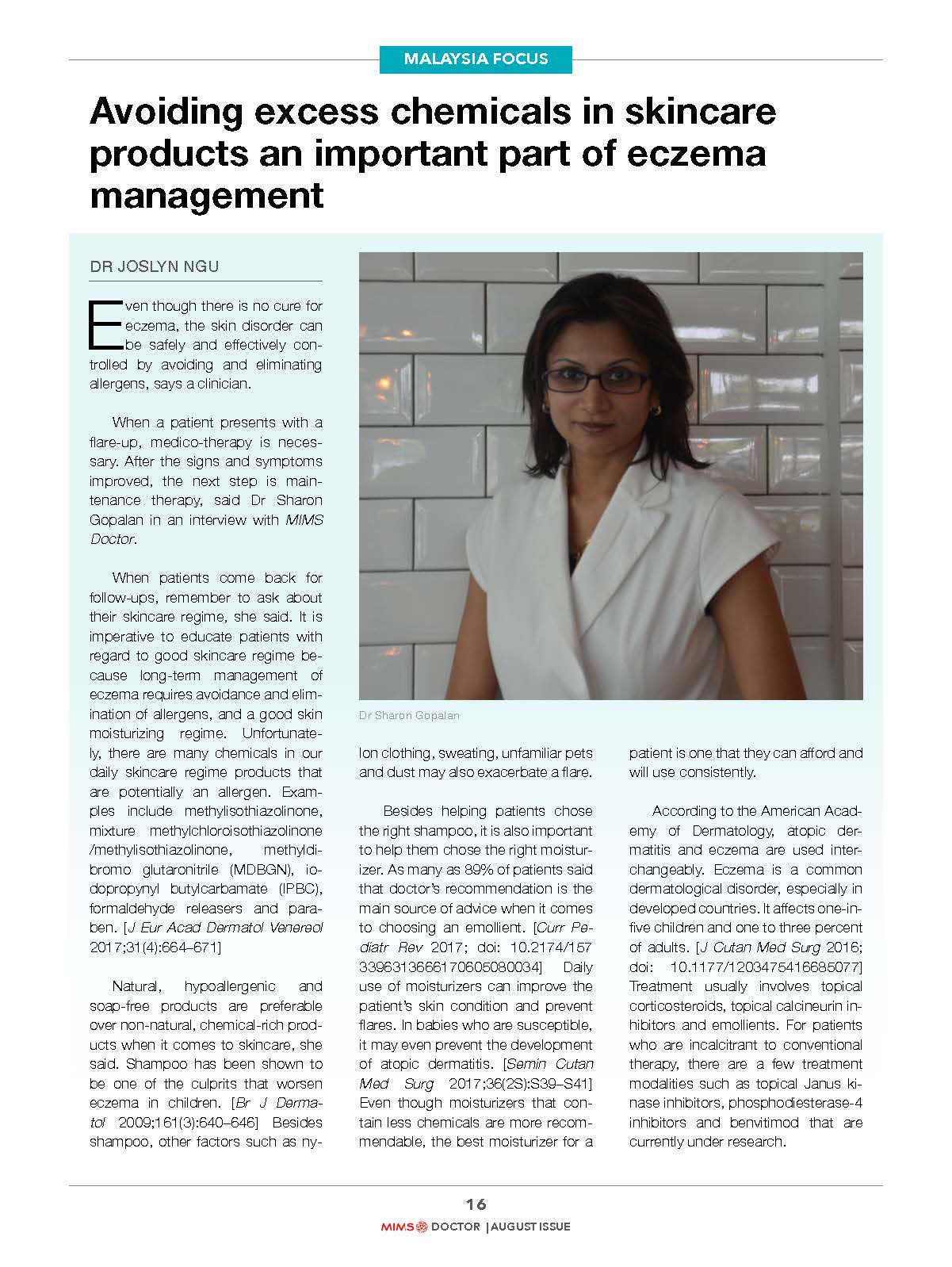
Even though there is no cure for eczema, the skin disorder can be safely and effectively controlled by avoiding and eliminating allergens, says a clinician.
When a patient presents with a flare-up, medico-therapy is necessary. After the signs and symptoms improved, the next step is maintenance therapy, said Dr Sharon Gopalan in an interview with MIMS Doctor.
When patients come back for follow-ups, remember to ask about their skincare regime, she said. It is imperative to educate patients with regard to good skincare regime because long-term management of eczema requires avoidance and elimination of allergens, and a good skin moisturizing regime. Unfortunately, there are many chemicals in our daily skincare regime products that are potentially an allergen. Examples include methylisothiazolinone, mixture methylchloroisothiazolinone /methylisothiazolinone, methyl dibromo glutaronitrile (MDBGN), io-propenyl butyl carbamate (IPBC), formaldehyde releasers and para-ben. [J Eur Acad Dermatol Venereol 2017;31(4):664–671]

Natural, hypoallergenic and soap-free products are preferable over non-natural, chemical-rich products when it comes to skincare, she said. Shampoo has been shown to be one of the culprits that worsen eczema in children. [Br J Dermatol 2009;161(3):640–646] Besides shampoo, other factors such as nylon clothing, sweating, unfamiliar pets and dust may also exacerbate a flare.
Besides helping patients choose the right shampoo, it is also important to help them choose the right moisturiser. As many as 89% of patients said that doctor’s recommendation is the main source of advice when it comes to choosing an emollient. [Curr Pediatr Rev 2017; doi: 10.2174/157 3396313666170605080034] Daily use of moisturizers can improve the patient’s skin condition and prevent flares. In babies who are susceptible, it may even prevent the development of atopic dermatitis. [Semin Cutan Med Surg 2017;36(2S):S39–S41] Even though moisturizers that contain less chemicals are more recommendable, the best moisturizer for a patient is one that they can afford and will use consistently.
According to the American Academy of Dermatology, atopic dermatitis and eczema are used interchangeably. Eczema is a common dermatological disorder, especially in developed countries. It affects one-in-five children and one to three percent of adults. [J Cutan Med Surg 2016; doi: 10.1177/1203475416685077] Treatment usually involves topical corticosteroids, topical calcineurin inhibitors and emollients. For patients who are incalcitrant to conventional therapy, there are a few treatment modalities such as topical Janus ki-nase inhibitors, phosphodiesterase-4 inhibitors and benvitimod that are currently under research.





